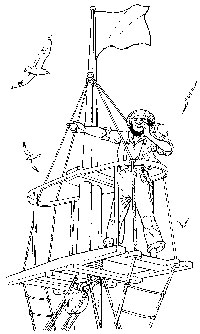F R O M T H E C R O W E ’ S N E S T
Use It Sustainably

The debate over the impact of paired midwater herring trawlers in the Gulf of Maine has been alive and unresolved for going on almost two decades. Herring supplies to the lobster fishery vary and end-of-the-season supplies are often the result of rationing during the fishing season.
Bait supplies are not the only concern the lobster fishery has been confronting. The continued boom in lobster landings appears to be leveling off. Long waiting periods for entry into the lobster fishery are part of a complex set of licensing issues that may soon change if the licensing bill now before the legislature is passed this summer.
While these circumstances are drawing publicity, something that could bring renewed optimism to the fishing industry more generally has been flying below the media radar. After decades of effort by individuals and groups to restore spawning habitat for the alewife and other anadromous fish in the Penobscot River watershed has begun and results are being seen.
Three years after just three of the more than 100 dams on the Penobscot River were removed, measured passage of alewives has gone from 54 in 2012 to 908,550. This number of alewives will result in a billion young of year alewife spawn pouring out of the river. Many of these will once again become the prey of groundfish in Penobscot Bay and the Gulf of Maine. The survivors with others will return to spawn and multiply in these same areas and any others opened to them by more dam removal and the addition of new fish ladders.
Research indicates that cod are coming back into areas from Penobscot Bay east, where they were traditionally found by fishermen. Lobstermen used alewives for bait before the dam-driven decline. Other species, including sturgeon and eels are returning with the alewives to recreate a habitat which, if regulated properly, can be a sustainable groundfishery providing diversity for what might be a changing lobster fishery.
The long struggle by people like scientist/fisherman Ted Ames and groups like the Penobscot East Resource Center and the Downeast Salmon Federation have made this possible. NOAA’s official declaration of the Penobscot River watershed as a targeted habitat restoration area will likely help see the ground work of these initiators carried through to a comprehensive habitat restoration program—a program that with the scientific knowledge now recognized might give us another chance to use it sustainably.
